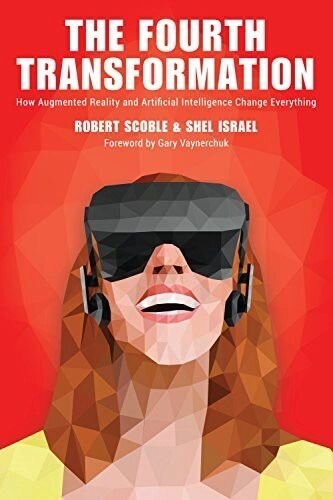The Fourth Transformation (2)
We shape our tools and thereafter they shape us. — Marchall Mcluhan, communication theorist
VR headsets let you journey into far-off worlds while remaining relatively stationary in a room, often tethered to a computer console. If gaming software is involved, then you become the game. If it’s a storytelling adventure, you control the script; the story does not unfold as a director dictates, but according to where you choose to look. You are in control: You are the story, and no one gets to see it precisely as you do, even when they are playing or watching with you.
Millennials are the first generation of digital natives. What will future generations of digital natives be like? How should you plan to reach them as customers? What will you use to attract the best of them as employees? What will the most entrepreneurial of them do to compete with established organizations such as yours?
To understand Millennials, watch them at play-and watch who and what they play with. Play shapes who they become. Their toys are indicative of how later in life they will learn, socialize, solve problems and conduct their work. If you want your business to be relevant to them, then you need to understand the impact that mixed reality technologies will have on them early in life.
Generation Z (Born after 1995) might have not known a world without smartphones and tablets. When they want to try a new game, they don’t turn to their parents for guidance or permission, they go to YouTube, learn about a game, choose and download it. This is a culture change in that kids learn to do things for themselves in more ways, more often.
Before Gen Z enters grade school, they are using digital technology to become -makers, to become self-reliant, and find and socialize with other kids. Before they enter high school, tens of millions of them will be playing VR and AR games. Perhaps they will start on phones, but we figure that will just make them want headsets more.
The idea of the world’s children ignore the inherent boundaries of geography, religion and politics to play together is an image we love, one that has hope built into it. They speak in a universal language called code, a transcendent language that transcends differences. Many other games and sites teach code. Perhaps a decade from today, more people will communicate in binary code than in English.
You are traveling through another dimension, a dimension not only of sight and sound, but of mind — a journey into a wondrous land whose boundaries are that of imagination. — Rod Serling, The Twilight Zones
For about 2,400 years, Aristotle defined the primary rule for how all stories must be structured: They must have a beginning, a middle, and an end. But if you think about it, our real-life stories never unfold that way. When Dear Angelica is realized in Fall 2016, general audiences will immerse themselves in the finished film at their own pace, wandering off into whatever directions and sequences they choose. Two people who attend and view together may leave with decidedly different perspectives on what they experienced or what the central point was.
Five years from now, the Academy Awards will have new categories for VR films as well as the traditional audiences. The ones that don’t have VR effects will appeal to older, diminishing audiences. Non-VR films will be related to minor categories like a foreign language and documentary films.
In a massive undertaking, Walt Disney Imagineering (WDI) used VR to design the $5.5 billion Shanghai Disneyland which opened in September 2016. Also in the works are Avatar Land for Orlando and a new Hong Kong Disneyland, as well as Start Wars for multiple properties.
Universal Studios, the № 2 theme park developer, has set up VR attractions based at its parks for such major amusements as Harry Potter, Transformers, and Iron Man.
The void is setting up VR experience centers in urban warehouses throughout North America. They feature a series of rooms large enough to hold eight 30-foot-square areas to accommodate diverse adventures. Haptic technology provides visitors a sense of touch so you can experience the wetness of an ocean floor or the heat of a volcano; they also let you feel the touch and warmth of a real or photographically produced virtual person.
In the summer of 2016, The Void premiered Ghostbusters Dimension in VR at Madame Tussauds New York, in conjunction with Sony Picture, which had just release the movie. Visitors strapped on ghost-busting photon packs and toted guns equipped with haptic sensors.

